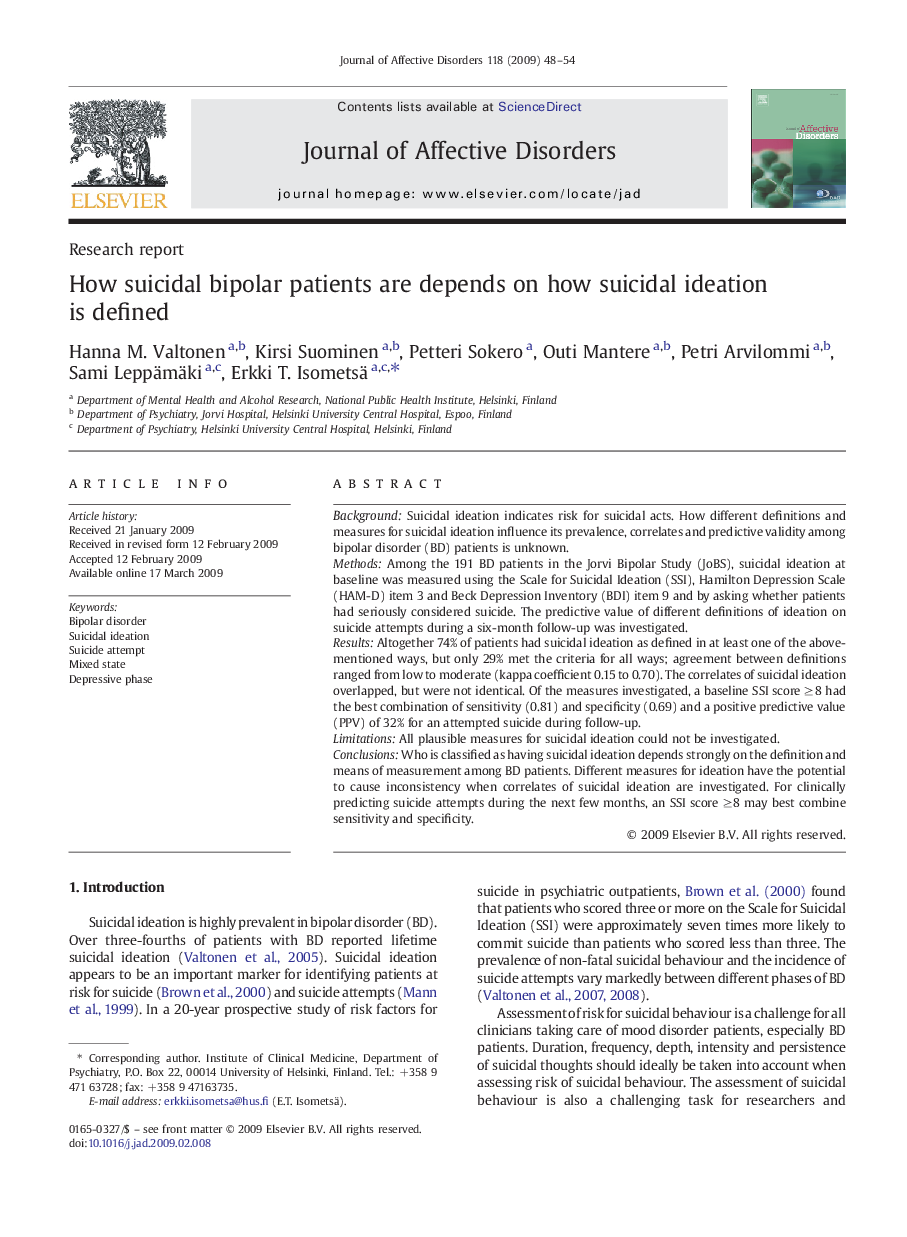| Article ID | Journal | Published Year | Pages | File Type |
|---|---|---|---|---|
| 4187109 | Journal of Affective Disorders | 2009 | 7 Pages |
BackgroundSuicidal ideation indicates risk for suicidal acts. How different definitions and measures for suicidal ideation influence its prevalence, correlates and predictive validity among bipolar disorder (BD) patients is unknown.MethodsAmong the 191 BD patients in the Jorvi Bipolar Study (JoBS), suicidal ideation at baseline was measured using the Scale for Suicidal Ideation (SSI), Hamilton Depression Scale (HAM-D) item 3 and Beck Depression Inventory (BDI) item 9 and by asking whether patients had seriously considered suicide. The predictive value of different definitions of ideation on suicide attempts during a six-month follow-up was investigated.ResultsAltogether 74% of patients had suicidal ideation as defined in at least one of the above-mentioned ways, but only 29% met the criteria for all ways; agreement between definitions ranged from low to moderate (kappa coefficient 0.15 to 0.70). The correlates of suicidal ideation overlapped, but were not identical. Of the measures investigated, a baseline SSI score ≥ 8 had the best combination of sensitivity (0.81) and specificity (0.69) and a positive predictive value (PPV) of 32% for an attempted suicide during follow-up.LimitationsAll plausible measures for suicidal ideation could not be investigated.ConclusionsWho is classified as having suicidal ideation depends strongly on the definition and means of measurement among BD patients. Different measures for ideation have the potential to cause inconsistency when correlates of suicidal ideation are investigated. For clinically predicting suicide attempts during the next few months, an SSI score ≥ 8 may best combine sensitivity and specificity.
